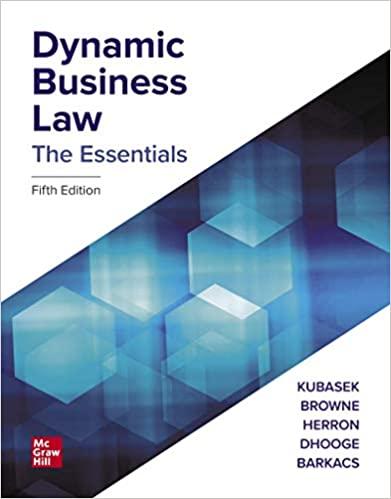Stacey Greenfield sued the Canadian entities under Section 16(b) of the Securities Act of 1934. The Canadian
Question:
Stacey Greenfield sued the Canadian entities under Section 16(b) of the Securities Act of 1934. The Canadian entities which were a number of investment funds and partnerships. Canadian Fund LP and Cadian Master Fund were two investment funds which shared a general partner, Cadian GP, LLC, which Eric Bannasch was the sole managing member. Canadian Capital Management, LP, also owned by Bannasch, served as the investment manager of the investment funds. In addition, all financial decisions for all Cadian entities pertinent to this case were made by Bannasch. Recall that Section 16(b) requires all statutory insiders to return short-swing profits. Statutory insiders also include “beneficial owners” of more than 10 percent of any equity security of a company. In this case, Greenfield sued the Canadian entities as a group for buying and selling Infoblox common stock shares while collectively owners of at least 10 percent of Infoblox. In filing this complaint, Greenfield also asserted that the Canadian entities are “inexorably intertwined” and could therefore be held liable under Section 16(b). The Canadian entities moved for summary judgment for failure to state a claim. Do you think groups of individuals or other entities such as companies and investment funds should be collectively classifiable as beneficial owners and therefore liable under Section 16(b)? What are the implications if they are? What are the implications if they are not? How do you think the court decided this question?
Step by Step Answer:

Dynamic Business Law The Essentials
ISBN: 9781260253382
5th Edition
Authors: Nancy Kubasek, M. Neil Browne, Daniel Herron, Lucien Dhooge, Linda Barkacs




